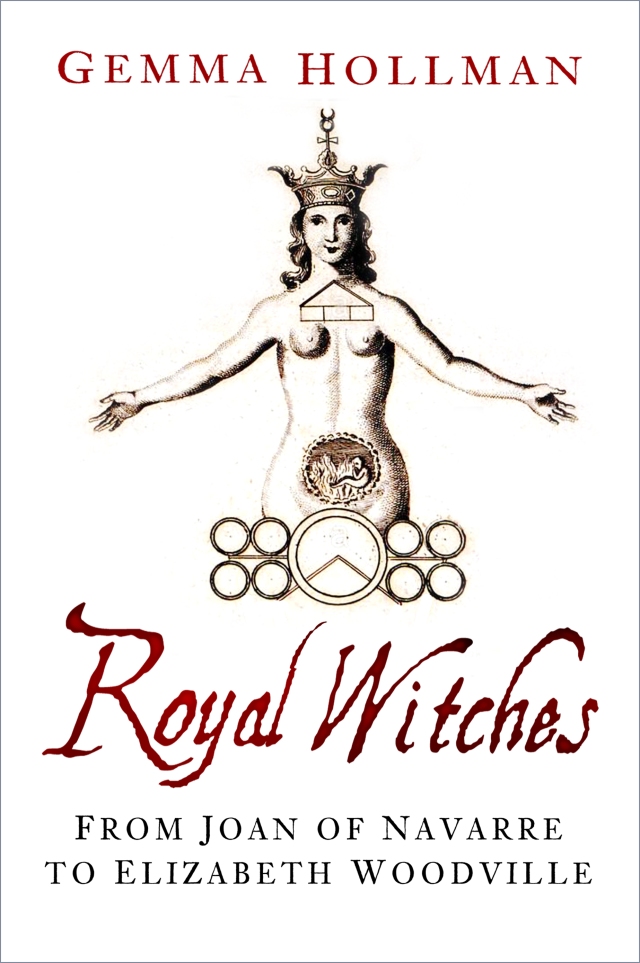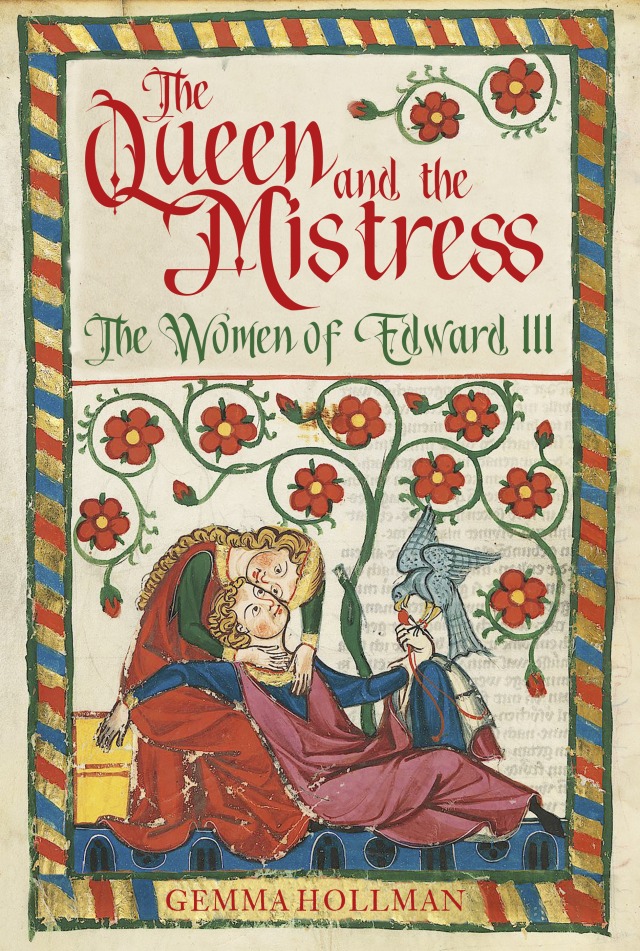As my last blog post on medieval English royals was about a woman from my masters dissertation, I thought I would continue the trend and go back to my undergraduate dissertation for the next in the series. For this we go back to the previous century, the early fourteenth century, and look at the wife of King Edward II of England, Isabella of France.
Isabella of France is a fantastically interesting historic figure, even more so because of how little-known she is; even I had never heard of her before I started research for my dissertation. To have not heard of a medieval Queen, especially amongst the public, may not seem like such a big deal, until you consider the fact that Queen Isabella deposed her husband, Edward II, and seized the throne of England, ruling as regent on behalf of her son for several years before he in turn seized power.
Isabella has garnered quite a negative reputation in modern times, and this was probably helped largely by the fact that one of the first modern historians who wrote about her was a Victorian named Agnes Strickland. Agnes and her sister wrote a comprehensive book about the Queens of England in 1894 and the book is still used by historians today, especially as for some of the lesser-known queens their book still holds one of the most comprehensive accounts of their lives. Agnes did not hold a high opinion of Isabella: she called her “one of the worst women that ever occupied the throne of England”. Even within the last 50 years, Isabella has been labelled by historians as “a woman of evil character, a notorious schemer” [Kenneth Fowler, The Age of Plantagenet and Valois – The Struggle for Supremacy 1328-1498 (London: Elek Books Limited, 1967), 16.]. Agnes’ scathing description of Isabella came largely out of Victorian values – whilst Isabella was estranged from her husband Edward II, she embarked on an affair with another man, an earl named Roger Mortimer. It probably also did not help that Isabella subverted Victorian values of a submissive woman who obeyed her husband at all costs, as demonstrated by her usurpation of the throne.

Isabella as pictured in Agnes Strickland’s Queens of England.
As always with history, the story was not so simple. Isabella came to England at the age of 12 in 1308 after she had been married to Edward who was at that time 24 years old. She was the only surviving daughter of Philip IV of France and as often happened during the medieval period the marriage was intended to improve relations between France and England. Even from the start the marriage hit problems; Edward had a very close relationship with Piers Gaveston, earl of Cornwall, which has been interpreted by historians as a homosexual relationship, as sworn brothers by oath or simply close friends. Nonetheless, at Isabella and Edward’s wedding, the French emissaries and Isabella herself were insulted at proceedings. Gaveston outshone both the King and Queen at the wedding, dressed more splendidly than either of them, and taking a forefront during the ceremony. Moreover, Isabella did not immediately get her promised dower, nor receive even small sums of money for her daily expenditure, so she was forced to live in the king’s household entirely dependent on him. This was not a situation for a princess of France or queen of England, particularly because one of a queen’s main sources of power came from her dower lands. This caused King Philip to send his personal seal to his daughter so that he could be sure that she could correspond with him about the situation at hand.
However, Isabella was well prepared for the role of Queen of England. Four years after her marriage, at sixteen years old, she held a key role in arranging peace between Edward and his rebellious barons, helped in part by bishops of the church and a team of lawyers sent by her father. Isabella continued to intercede with the barons throughout her husband’s reign as Edward had a tumultuous relationship with his barons, and she became exceedingly popular amongst English subjects, holding great respect. Indeed, the political elite in England held great sympathy for Isabella and felt that she was mistreated by Edward, constantly being shunned for his male favourites.
The events that led up to Isabella deposing Edward II actually unfolded fairly quickly, and it was not as some historians argue a plan long in the making. There is much evidence that Isabella’s main interest was to be a good queen to her subjects and look after the English people, and it was only after her husband made it impossible for her to do her job that her feelings towards him began to change. In 1324, Edward confiscated all of Isabella’s lands as a result of the rising tensions and war in France, and this was a massive blow to Isabella’s source of power and patronage. In 1325, Edward sent Isabella to France to negotiate peace and to try and reclaim the English lands of Acquitaine which had been lost during the previous year. He was supposed to go to France himself to pay homage to the new king of France, Isabella’s brother, Charles IV. However, he did not wish to do this as he feared for the life of his new favourite, Hugh Despenser; his previous favourite, Gaveston, had been murdered by jealous barons in 1312. Isabella agreed to go on the diplomatic mission, and she was successful in her diplomacy, but homage was still required. She persuaded Edward to send their son, the future Edward III, to France to pay homage on his behalf. This he did, and the thirteen year old Edward paid homage accordingly.

Edward III giving homage to Charles IV under the guidance of Isabella.
However, Isabella refused to return back to England with her son once this was completed. She was welcomed to the French court, as it was filled with members of her family, and in England her life had become unbearable, her position laughable. Edward wrote to Charles to send Isabella home, but Charles replied that the “queen has come of her own will and may freely return if she wishes. But if she prefers to remain here, she is my sister and I refuse to expel her.”
At some point, Isabella began gathering Englishmen who were taking refuge at the French court after fleeing England at various points in the past decade after feuds with the King. Amongst these was Roger Mortimer, and at some point Roger and Isabella became lovers, although historians are not agreed upon when exactly. Isabella began playing a fantastic propaganda game – she dressed in widows clothes, claiming that the King’s favourite, Despenser, had destroyed her marriage with Edward (an idea which many English people agreed upon). She ignored all of Edward’s many letters begging, and threatening, her to come home, and her son also stayed at his mother’s side, ignoring Edward’s letters to him as well. Eventually, Isabella had gathered a sufficient court of exiled Englishmen in France. She just needed an invasion force, and for this she turned to Hainault. A marriage alliance was agreed between Edward III and one of the Count of Hainault’s daughters, whom Edward was given the freedom to choose (probably to aid in his co-operation), and he was duly betrothed to Philippa of Hainault. In return, the Count of Hainault gave Isabella a substantial dowry for Philippa, and the money was used alongside an earlier loan from Charles of France to pay for a mercenary army. Her force set sail for England along with some troops sent by Hainault.

Philippa, pictured in Agnes Strickland’s Queens of England.
Their small force evaded ships sent by Edward to stop them, and Isabella landed in England on 24th September, 1326 dressed in her widow garments. Her success was swift. The political elite in England supported her invasion – they had respect for Isabella as a model medieval queen, who had interceded in their favour on many occasions, and they hated the Despenser family as much as she did. They felt that Isabella was saving the kingdom from the horrible tumult that it had been under her husband’s rule. Most of the areas of England that Isabella had successfully interceded on behalf of whilst she had been Queen Consort now joined her in her invasion.

Isabella and Edward III landing in England, image c. 1455, Jean Fouquet.
Edward and Despenser had fled to Wales, but they were captured and Despenser’s father was gruesomely executed by lords of the realm by being hacked to pieces and fed to dogs. Despenser himself was killed by being dragged behind a horse then hanged, drawn, and quartered. After the main enemies of the lords of the realm had been executed, Isabella – now with Mortimer by her side – began a policy of reconciliation, which worked well with her experience and reputation. Isabella took charge of Edward’s Great Seal, symbolising the fact that she was now ruler of the land, and Edward was imprisoned in the Tower of London. The King’s Council, followed by Parliament, decided that Edward II was to be legally deposed and placed in house imprisonment for life, with his son Edward III to take the throne.

Enjoying this blog post? Buy me a hot chocolate!
Consider donating the cost of a hot chocolate to me, so I can continue to write and run Just History Posts.
£3.50
Due to his young age, and Isabella’s astounding power at this moment in time, Parliament appointed her regent of the realm during Edward III’s minority. At some point whilst in imprisonment, Edward II died and it was widely believed both then and now that he had been murdered (the suggestion often being that it was instigated by Isabella and Mortimer) although there are many suggestions that he simply died of ill health. There are also some conspiracy theories that Edward did not in fact die at all, and escaped to Europe to live as a hermit for the rest of his life (I do suggest reading some of these theories, they make for interesting reading!)

Isabella directing the siege of Bristol, from a manuscript of Froissart’s chronicle, fifteenth century.

Hugh Despenser and another favourite of Edward II, Edmund Fitzalan, brought before Isabella for their trial.
Isabella ruled England with Mortimer at her side for four years until 1330, when Edward III seized the throne after the couple grew in unpopularity. Mortimer was seized from his and Isabella’s bed in Nottingham Castle in the middle of the night on 19th October, 1330. Mortimer was later put on trial for treason and sentenced to be executed, but Edward showed him leniency and he was not quartered or disembowelled as was the punishment for those guilty of treason. Edward took control of the throne in full, with his now-wife Queen Philippa by his side. Isabella did not suffer any negative consequences for her actions, and she lived the rest of her life in luxury, experiencing continuous favour from Edward III. Edward appears to have loved his mother deeply, as shown by his support of her coup and his treatment of her whilst he was King. Upon Isabella’s death in 1358, Edward paid great expense for her funeral, paying for hundreds of candles, cloths of gold, incenses and spices to adorn her tomb as well as donated alms to various religious orders and giving generous rewards to her servants. In later years he continued to commemorate her death to great expense.
Isabella was a fantastically interesting character, and not a simple 2D caricature of an evil, scheming queen as she has previously been portrayed to be. She was beautiful, incredibly intelligent, loyal, and she had a great sense of duty to her English subjects and her son. She carried out an incredible feat in deposing her husband so successfully, and wielded power far beyond that experienced by most medieval English Queens. She has been described by many as a She-Wolf, sometimes in a positive way, often in a negative. But she is certainly a fascinating figure to study.
Previous Blog Post: The Humanity of Manuscripts
Previous in Royal People: Eleanor Cobham, Royal Witch?
List of Blog Posts: here Blog Homepage: here
Buy my books via the pictures below! Or why not check out our shop?

Follow us:
Select Bibliography
Primary
Froissart, Jean. The Chronicles of Froissart. Translated by John Bourchier. London: Macmillan and co. Limited, 1899.
Le Baker, Geoffrey. The Chronicle of Geoffrey Le Baker of Swinbrook. Translated by David Preest and Richard Barber. Woodbridge: Boydell Press, 2012.
Vita Edwardi Secvndi. Translated by Wendy R. Childs. Oxford: Clarendon Press, 2005.
Secondary
Benz St. John, Lisa. Three Medieval Queens: Queenship and the Crown in Fourteenth-Century England. New York: Palgrave Macmillan, 2012.
Fowler, Kenneth. The Age of Plantagenet and Valois – The Struggle for Supremacy 1328-1498. London: Elek Books Limited, 1967.
Mortimer, Ian. The Perfect King – The Life of Edward III Father of the English Nation. London: Jonathan Cape, 2006.
Prestwich, Michael. Plantagenet England 1225-1360. Oxford: Clarendon Press, 2005.
Strickland, Agnes and Rosalie Kaufman. Agnes Strickland’s Queens of England. Boston: Estes & Lauriat, 1882.
Weir, Alison. Queen Isabella: Treachery, Adultery, and Murder in Medieval England. New York; London: Ballentine Books, 2005.






Reblogged this on Unbound and commented:
This week we are featuring an article from the blog Just History Posts. Wonderful and detailed blog. Check it out! (justhistoryposts.wordpress.com)
LikeLike
Appreciate your blogg post
LikeLiked by 1 person
Hello! My first novel was based on the life and adventures of Isabella. I recently published my third novel based on the life and accomplishments of Christine de Pizan. I wonder if you might be interested in reviewing it for your webpage. I’d naturally be delighted to send you a copy, either ebook or paperback. I sold a few thousand copies of The Rogue Queen, and I’d love to see Christine’s story become more well-known. A review (or interview!) on your webpage could provide a tremendous boost. My email address is below; I look forward to hearing from you!
LikeLiked by 1 person
Hi Marcia, thanks for getting in touch – I’d definitely be interested! WordPress doesn’t pass on the email addresses you have to provide for writing a comment so I can’t see yours, but email me at justhistoryposts@gmail.com and we can have a chat
LikeLike